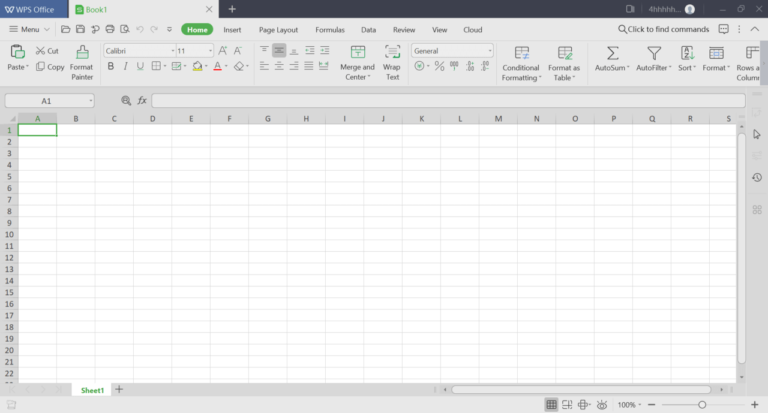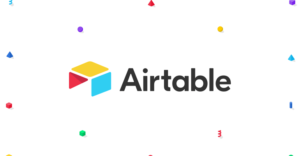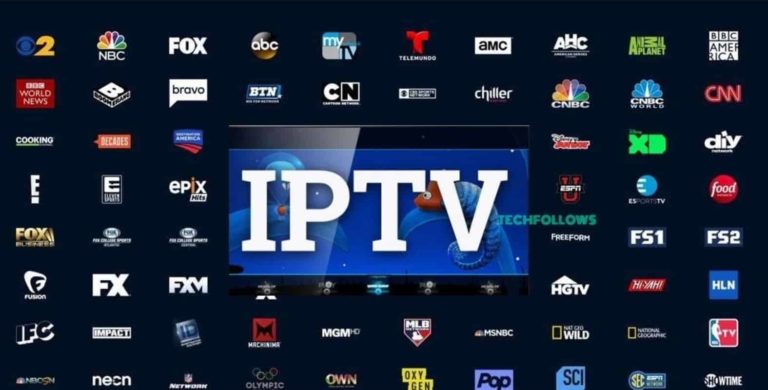10 Best spreadsheet software in 2025 (Free & Paid)
Interested in spreadsheet software to help you organize your life or business? We look at the industry's best offers here, to determine how best they can help you.

From handling simple tables to managing large data sets, the flexibility of spreadsheets is unparalleled. So, if you are considering spreadsheet software for your business or other projects, then you made the right decision.
Modern spreadsheet apps have overgrown their accounting roots from the 1970s. Today, they come in different flavors, designed for different users and purposes. Most are easy to use, others offer database, automation, collaboration, and integration features.
The only problem is: There are so many of them out there.
That’s why this top 10 spreadsheet software review takes a look at only the top apps. To show you their best features and how they can improve your life and business.
Top Spreadsheet Software
| Name | Best for | Price | Website |
|---|---|---|---|
| Microsoft Excel | Reliability | $7/m, $149 | microsoft.com |
| Google Sheets | Cloud collaboration | Free, $6/m | sheets.google.com |
| Airtable | Flexibility | Free, $10/m | airtable.com |
| Smartsheet | Project management | $14/m | smartsheet.com |
| Apple Numbers | Apple users | Free | apple.com/numbers |
| Zoho Sheets | Online integration | Free | zoho.com/sheet/ |
| Quip | Embedding | $10-$100/m | quip.com |
| Sheetgo | Automation | Free, $20/m | sheetgo.com |
| LibreOffice Calc | Open source | Free | libreoffice.org |
| Appsheet | No code apps | Free | appsheet.com |
1. Microsoft Excel

Microsoft Excel is the industry standard when it comes to spreadsheet software. It is one of the oldest and best known, plus it offers more calculation functions than the competition with its 486 functions.
You can do so much with Excel, such as data analysis and calculations, charts, formats, formulas, and so on. It is also available as a smartphone app for Android and iOS devices, so you can use it on the go.
Collaboration is in-built. You can share and edit files with your team-mates and leave comments if you like. Or even attach and edit your sheet in an email.
There are also professional templates in over 40 categories, to help you jump-start your projects. And if you are handling large datasets, you can depend on its robust handling of over 1 million rows and 16,000.
Excel comes in two variants: The editor and the viewer. You can access the free viewer on the web, but you can’t edit with it. For editing and using Excel’s premium functions, you will need the main app, which costs $149 outright or starts at $7 per month for Office 365.
Pros: Reliable, 486 functions, macro programming
Cons: Free plan is just a viewer
Website: https://www.microsoft.com
2. Google Sheets

With over 400 functions and nearly as many as Microsoft Excel, Google Sheets offers a free alternative that most people and businesses are already making use of.
It is a web-based solution that is also available on Android and iOS platforms. Sheets lets you handle most spreadsheet functions online, coupled with Google’s Workspace collaboration features. You can chat, comment on the sheet, edit in real-time, and easily share.
You can import Excel files and easily turn Google Forms or survey data into a spreadsheet. You can also turn a spreadsheet into an app with AppSheet or Apps Script, and get insights on your data using AI support.
All these and more features come backed by Google’s top-grade security. Plus, you will find tons of third-party add-ons to help boost your workflow, or simply build yours.
Pros: Collaboration, automation, web, Android, iOS
Cons: No desktop app
Website: https://sheets.google.com
3. Airtable

When you combine the simplicity of spreadsheets with the power of relational databases, you get a versatile and powerful product like Airtable. It lets you do all the wonderful things you wished other spreadsheet software could do.
You can easily insert different types of data in each cell, for example. Then manage the cells and rows as you would manage database records. This includes automation functions, access controls, and functional field types.
Furthermore, you can view the data in different formats, like grid, kanban, gallery, and calendar forms. Then you can sync and integrate your workflow with multiple apps, collaborate with team members, and even build your custom app using ReactJS.
This flexibility from the combination also opens up many possibilities for using Airtable, as you can see from the many impressive projects on the Airtable Universe page.
Airtable is available as a free plan with limited features, so you can check out how cool it is. And when you want more power, then you can upgrade to its premium plans starting from $10 per user per month.
Pros: Flexible, powerful, extensible, free plan, collaboration
Cons: Account limitations
Website: https://airtable.com
4. Smartsheet

If your spreadsheet needs are more geared toward business and project management, then you need to check out Smartsheet. It is a very impressive spreadsheet solution for business management.
Smartsheet comes with proven solutions to handle all types of business-management challenges. Simply get the right template, and you are good to go.
You get different views of your data, automation capabilities, forms for data entry, reports, and dashboards.
Smartsheet is very flexible and works well for all business sizes, ranging from small teams to large corporations. 90% of Fortune 100 companies and 75% of Fortune 500 companies use Smartsheet.
There is no free plan here. But there is a free trial, and the base ‘Individual’ plan starts at $14 per month.
Pros: Flexible, proven solutions, collaborations, extensive features
Cons: No free plan
Website: https://www.smartsheet.com
5. Apple Numbers

Apple Inc. makes Numbers for its iOS and macOS users and it is free and available in 31 languages. It comes with over 250 built-in functions and over 30 Apple-designed templates.
The Numbers app helps you create beautiful spreadsheets that come with images and tables. So you can visualize your data with an impact.
It also supports real-time collaboration, so you can work with team-mates as you please. By using iCloud, anyone can access and work on your spreadsheets, if you allow it.
Plus, Numbers is Excel-friendly. It is easy to import or save Excel formats and to collaborate with PC users on a project.
Pros: Sleek design, lovely templates, extensive functions
Cons: Only for Apple users
Website: https://www.apple.com/numbers
6. Zoho Sheets

Available on the web and for smartphones, Zoho Sheets is a great offer for those who already use Zoho services, or plan to do so.
It comes with over 350 pre-defined functions to help you with all sorts of calculations. Plus, you can easily scan a receipt and automatically add its data to your spreadsheet.
Zoho Sheets also comes with collaboration features. They include user access control, edit permissions, cell and range-level comments, group discussions, and so much more.
Best of all, Zoho Sheets is free. It is part of the Zoho productivity suite, and it includes Excel, CSV, and TSV compatibility.
Pros: Integration features, extensive functions, collaboration, free plan
Cons: Not available for desktops
Website: https://www.zoho.com/sheet
7. Salesforce Quip

Standard spreadsheet software is often a matrix of endless cells, organized as rows and columns. This is great for organizing and crunching big data, but not perfect for presentations.
Quip makes it easy to communicate with data. A Quip is like a combination of a word processor, image viewer, and spreadsheet application. It lets you create detailed presentations that can include text, images, spreadsheets, checklists, links, and even code blocks.
The impressive part of it all is that you can reference your spreadsheet data anywhere in the document. So, if your spreadsheet changes, then the referenced word’s values will also change.
Quip additionally lets you use multiple spreadsheets in one document. And you can collaborate with your team-mates, complete with edit history and even individual-cell comments.
The package is available for web and smartphones, but there is no free offer. Its plans start from $10 per user per month, and go up to $25 and $100 per user per month. This depends on the features you want.
Pros: Unique approach, flexibility, collaboration
Cons: No free plan
Website: https://quip.com
8. Sheetgo

Those who need to automate their data flow as much as possible should check out Sheetgo. It offers a simple way to automate your spreadsheet work and that’s it.
Sheetgo is a spreadsheet connection and automation system. So there is no Sheetgo spreadsheet, so to say. You can work with many other spreadsheets though, including Google Sheets, Excel, TSV, and CSV files.
The Sheetgo service is perfect for teams or businesses that handle lots of spreadsheets, and additionally need to transfer data from one sheet to the other often. A good example is inventory management and forecasting.
Sheetgo lets you set up connections from one or more sheets to other sheets, resulting in a custom workflow for your organization. Data is then transferred at each system run.
You can choose how often you want your spreadsheets to update automatically. The Free and Advanced plans for $20 per month update once per day, while higher plans update hourly. Of course, you can make up to 99 manual updates per month on the Free plan and 500 on the Advanced.
You can also filter your data, track your spreadsheet changes over time, and merge up to 80 spreadsheet files into one master document.
Pros: Automation, flexibility, free plan
Cons: Overkill for small tasks
Website: https://www.sheetgo.com
9. LibreOffice Calc

As part of the LibreOffice software package, Calc is a free and open-source spreadsheet application that offers nearly all the features you can want from standard spreadsheets.
It is also available for a variety of platforms, including Linux, FreeBSD, macOS, and Windows. You can use it to read and write most excel files, as well as its native ODF and CSV formats.
Calc is great for both simple and large datasets. It supports up to 1 million rows, so it is a solid application for compute-intensive scientific work as well.
There are advanced number-crunching features with built-in wizards to help you along the way. Plus, external database integration and multi-user support for collaboration.
Pros: Open source, free, professional features
Cons: Nots available on mobile
Website: https://www.libreoffice.org
10. Appsheet

Countless business owners and managers often come up with ideas on how to make the best use of their company’s data using software applications. But then, they lack the coding skills to turn those ideas into functional apps.
That’s where Appsheet comes in – it helps you create a functional app from your spreadsheet data, with absolutely zero programming knowledge.
Appsheet apps are also free for up to 10 users, from where you will need a Premium subscription for $5 per month or Pro for $10 per month. There are also Business and Enterprise plans, with each offering more features.
Happy Appsheet customers range from government agencies around the world to manufacturers and tech companies. Each using Appsheet to leverage their organization’s data, while streamlining their workflows.
Pros: No-code app development, easy to use, free option
Cons: You still have to do the designing
Website: https://www.appsheet.com
Conclusion
We have reached the end of this top 10 spreadsheet software list, and you have seen all the great offers out there, including the simple and the complex, the manual and the automated.
As you may have also realized, there is no single package that beats the rest. So, it is up to you to figure out what your needs are and then choose the service that best meets them.




